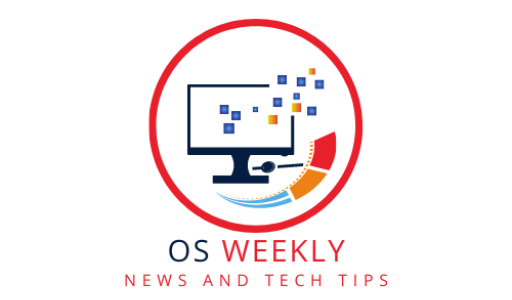Linux Distribution Learning Materials
Linux distribution learning materials play a crucial role in enabling individuals to acquire knowledge and skills in effectively using and managing various Linux distros. Whether you are a beginner or an experienced user, having access to high-quality learning resources can greatly enhance your understanding and proficiency in working with Linux. In this article, we will explore the importance of learning materials for Linux distribution and discuss various resources available for learners.
Importance of Learning Materials for Linux Distribution
Learning materials serve as a roadmap for individuals seeking to gain expertise in Linux distribution. They provide structured guidance, explanations, examples, and practical exercises that facilitate the learning process. Learning materials not only help users grasp the basics but also delve into advanced concepts and techniques, allowing them to become proficient in their chosen Linux distros. With well-designed learning materials, users can overcome challenges, troubleshoot issues, and explore the full potential of their Linux systems.
Online Learning Platforms for Linux Distro
Online learning platforms offer a wide range of courses, tutorials, and interactive learning experiences for Linux distro. Platforms like Udemy, Coursera, and edX host courses on Linux administration, shell scripting, system configuration, and more. These platforms often provide comprehensive learning paths, allowing users to progress from beginner to advanced levels.
Official Documentation and Manuals
Linux distributions typically provide official documentation and manuals that serve as the primary learning resource. These resources offer in-depth explanations, configuration guides, and command references specific to the distribution. Official documentation is regularly updated to ensure it aligns with the latest version of the distribution and features.
Books and eBooks for Linux Distribution
Books and eBooks are valuable resources for individuals who prefer offline learning or in-depth exploration of specific Linux distributions. These resources cover a wide range of topics, including system administration, security, networking, and programming. Popular titles like “Linux Bible” by Christopher Negus and “The Linux Command Line” by William Shotts provide comprehensive coverage of Linux distributions.
Video Tutorials and Online Courses
Video tutorials and online courses offer a dynamic and engaging learning experience for Linux distribution. Platforms like YouTube and platforms dedicated to Linux education, such as Linux Academy, provide a vast collection of video content. These resources include demonstrations, walkthroughs, and practical examples, making it easier for learners to understand complex concepts.
Community Forums and Discussion Boards
Community forums and discussion boards are excellent platforms for learners to interact with experienced users, seek help, and share knowledge. Websites like LinuxQuestions.org and Stack Exchange offer vibrant communities where users can ask questions, find solutions to common problems, and engage in discussions related to Linux distribution.
Blogs and Technical Websites
Blogs and technical websites written by Linux enthusiasts and professionals provide insightful articles, tutorials, and how-to guides. Websites like Linux.com, Tecmint, and It’s FOSS offer a wealth of information on various Linux distributions, software recommendations, troubleshooting tips, and industry news.
Linux User Groups and Meetups
Linux user groups (LUGs) and meetups provide opportunities for face-to-face interactions with fellow Linux enthusiasts and experts. Joining a local LUG or attending Linux-related meetups allows learners to share experiences, learn from others, and participate in workshops and presentations.
Social Media Groups and Channels
Social media platforms, such as Reddit, Facebook, and LinkedIn, host numerous Linux distribution-focused groups and channels. These communities provide a space for learners to connect, share resources, discuss latest developments, and seek guidance from experienced users.
Linux Distribution-Specific Websites and Resources
Many Linux distributions have dedicated websites and resources that cater to learners. For example, Ubuntu offers comprehensive documentation, forums, and tutorials specifically tailored to their distribution. Exploring distribution-specific resources can provide valuable insights and specialized knowledge.
Curated Learning Paths and Roadmaps
Some platforms curate learning paths and roadmaps to guide learners through their Linux distribution journey. These paths outline the recommended order of topics and provide a structured approach to learning. Websites like Linux Journey and The Linux Foundation offer curated learning paths for beginners and advanced users.
Hands-on Practice and Projects
Hands-on practice and projects are essential for reinforcing knowledge and developing practical skills. Setting up a personal Linux server, working on open-source projects, or participating in coding challenges provide valuable opportunities to apply what you have learned and gain real-world experience.
Documentation Translation and Localization Efforts
The Linux community strives to make learning materials accessible to a global audience. Documentation translation and localization efforts ensure that learning resources are available in multiple languages, making it easier for non-English speakers to learn Linux distribution.
Conclusion
Learning materials are the cornerstone of acquiring knowledge and skills in Linux distribution. Whether through online platforms, official documentation, books, video tutorials, community engagement, or curated learning paths, learners have access to a plethora of resources. By leveraging these resources and engaging in hands-on practice, individuals can confidently navigate Linux distributions, troubleshoot issues, and harness the power of open-source software.
FAQs
Q: How long does it take to become proficient in a Linux distribution? A: The time to become proficient in a Linux distribution varies based on individual dedication, prior experience, and the complexity of the distribution. With consistent practice and learning, one can gain proficiency within a few months to a year.
Q: Are Linux distributions suitable for beginners? A: Yes, many Linux distributions, such as Ubuntu and Linux Mint, offer user-friendly interfaces and extensive documentation, making them suitable for beginners.
Q: Can I switch between Linux distributions without losing my data? A: Switching between Linux distributions can be done without losing your data by properly backing up your files and preserving them during the installation process.
Q: How can I contribute to the Linux community as a learner? A: As a learner, you can contribute to the Linux community by sharing your knowledge on forums, participating in open-source projects, translating documentation, and helping fellow learners.
Q: Are Linux distributions free to use? A: Yes, most Linux distributions are free and open-source, allowing users to download, use, and modify them without any cost.

